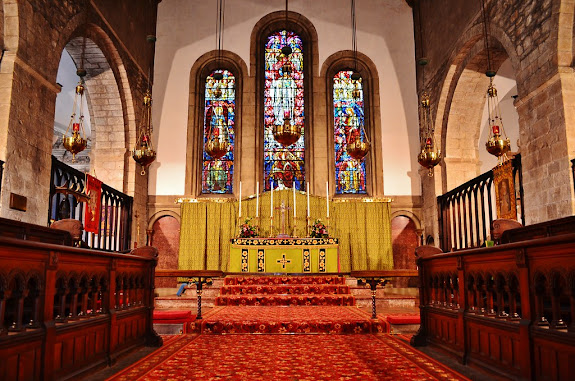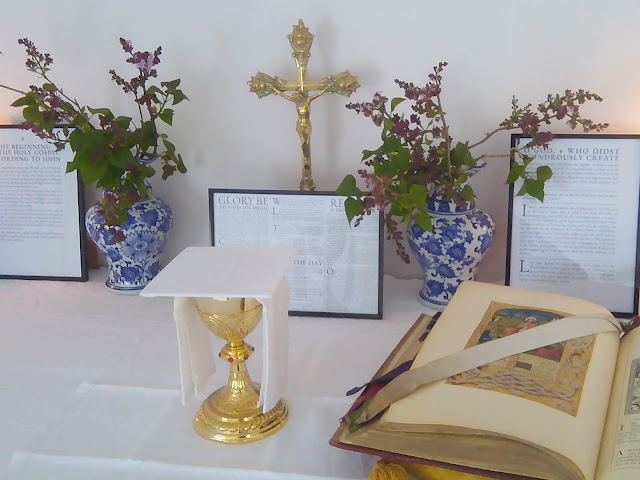Clairvaux I
The beginnings of Clairvaux and Britain
British Library Yates Thompson 32 f. 9v. A Bruges miniature of Bernard de Fontaines (Bernard of Clairvaux) taking possession of the Abbey of Clairvaux. From the Chroniques abrégées des Anciens Rois et Ducs de Bourgogne. According to the British Library the church in the background is based on St. Servatius in Maastricht.
Clairvaux is just a few kilometres outside today's Burgundy, being just over the border in the Aube département, but in the Middle Ages it was a key location in the Burgundian monastic revival, and had a great influence upon England. Indeed, it was the English Abbot of Cîteaux, St Stephen Harding, who chose St Bernard to lead a group of monks from Cîteaux, which was growing rapidly, to found the Abbey of Clairvaux in 1115 as the third daughter of Cîteaux (after La Ferté and Pontigny). The growth of the monastery was phenomenal: at St Bernard's death in 1153, it contained about 700 religious, including 100 novices, and had been founding on average two daughter houses every year. The filiation of Clairvaux numbered 164 houses in 1153, rising to 263 by the end of the century, in countries ranging from Portugal to Sweden, and from England and Ireland to Sicily.
The first English daughter house of Clairvaux was Rievaulx in Yorkshire (1132), and its first abbot, William, was an Englishman who had been living as a monk in Burgundy, where he had become the secretary of St Bernard. After Abbot William's death in 1145, his cultus developed, and the remains of his shrine are still to be seen among the ruins at Rievaulx today:
David Knowles, in his Monastic Order in England, says that "Among Bernard's most trusted disciples was a small group from York and its neighbourhood, and this goes far to explain why the distant north was chosen for the first transmarine foundation of Clairvaux." That group of Yorkshiremen who had been living with Bernard in Burgundy included Henry Murdac, abbot of Vauclair (1134), then of Fountains (1143), then Archbishop of York (1147-53); and Richard of York, precentor of Clairvaux and then Fountains. Archbishop Henry Murdac of York, the first Cistercian to become an English bishop, was consecrated by Pope Eugenius III, who had been his friend and contemporary as a fellow monk of Clairvaux.
Fountains, founded by dissident monks from York wanting a stricter rule of life, asked to be taken under the wing of Clairvaux in 1132, and its second abbot, Richard (d.1143), was buried at Clairvaux itself. The fledgling community at Fountains was steered into the Cistercian orbit by Archbishop Thurstan of York, who had himself spent time in Burgundy (see Saulieu (anglicansinburgundy.blogspot.com) ). So clearly there was a great deal of ecclesiastical va et vient between Yorkshire and Burgundy in the 12th century.
Further foundations were soon made from Clairvaux elsewhere in the British Isles: Mellifont in Ireland in 1142; Boxley in Kent in 1146; Margam (Port Talbot, Wales) in 1147; Whitland in West Wales (1151).
Mellifont Abbey, County Louth:
Part of the mediaeval buildings of Boxley Abbey survives within Boxley Abbey House today, as does the former hospitium, now a barn:
At Margam Abbey, the ruins of the chapter house survive, and the church of St Mary consists of the nave of the former abbey church:
The ruins of Whitland Abbey, Carmarthenshire:

.jpeg)






.jpeg)

.png)
